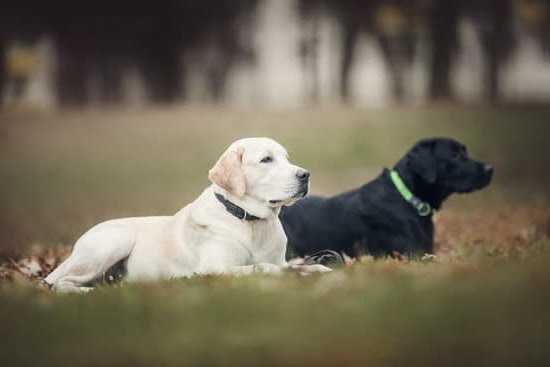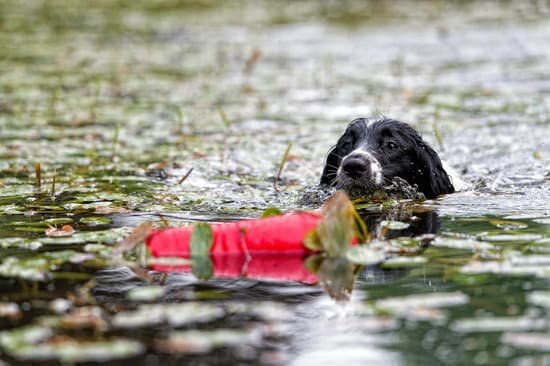Training your dog to go potty outside is an essential part of their development and behavior. For most dog owners, the transition from puppy pads to outdoor potty training can be challenging, but with the right approach, it can be a rewarding experience for both you and your furry friend. Understanding your dog’s bathroom habits and using positive reinforcement techniques are key factors in this process.
Introducing your puppy to puppy pads as an initial training method can provide a sense of security and help them develop good bathroom habits. This method allows for a gradual transition to outdoor potty training, making the process less overwhelming for your pet. Choosing the right time for outdoor training sessions is crucial, as consistency and persistence play a significant role in successfully training your dog.
While setbacks and accidents are inevitable, handling them with patience is vital. Celebrating successes and milestones in the training journey will motivate your dog to continue their progress. Consistency, persistence, and patience are all necessary components when teaching your dog to go potty outside. This article will guide you through the training process, offering tips and techniques to ensure a smooth transition for you and your furry friend.
Understanding Your Dog’s Bathroom Habits
Before beginning the process of transitioning your dog from puppy pads to going outside, it is important to understand your dog’s bathroom habits. This includes being aware of the times of day when your dog usually needs to eliminate, as well as any specific behaviors or signals they exhibit when they need to go.
By paying attention to these cues, you can better anticipate when your dog needs to use the bathroom and be proactive in guiding them towards the desired potty area.
In addition to recognizing timing and signals, understanding your dog’s bathroom habits also involves learning about their preferences for where they like to go. Some dogs may prefer grassy areas, while others may like a specific spot in the yard. By observing and understanding these preferences, you can create a more comfortable and familiar environment for your dog when it comes time to transition from using puppy pads indoors to going outside.
Overall, taking the time to understand your dog’s bathroom habits is crucial in successfully training them to go outside. Whether it’s knowing their typical schedule or recognizing their preferred potty area, having this knowledge will make the transition process smoother and more effective for both you and your furry friend.
Introducing Puppy Pads as an Initial Training Method
Benefits of Using Puppy Pads
Puppy pads can be a great tool for training your dog to go potty in a designated area indoors. They are especially useful for young puppies who may not have full bladder control yet. By using puppy pads, you can protect your floors and carpets from accidents while still teaching your dog the concept of where they should go to the bathroom.
How to Introduce Puppy Pads
When introducing puppy pads to your dog, it’s important to place them in a consistent and easily accessible location. This could be in a designated area of the house, such as the kitchen or laundry room. Start by placing the puppy pad in this location and encouraging your dog to use it by leading them there when you anticipate they need to go. Consistency is key during this initial phase of training.
Transitioning to Outdoor Training
While puppy pads are helpful for indoor training, the ultimate goal is to transition your dog to going potty outside. Once your dog has become accustomed to using the puppy pad regularly, you can begin slowly moving the pad closer to the door that leads outside. Eventually, you can place the pad just outside the door and encourage your dog to go potty there. This gradual transition will help your dog understand that they are meant to potty outside.
Gradual Transition to Outdoor Potty Training
The gradual transition to outdoor potty training is an essential aspect of successfully training your dog to go from using puppy pads indoors to going outside. Once your dog has mastered using the puppy pads consistently, it’s time to start introducing them to the idea of going potty outside. This is a crucial step in ensuring that they can effectively do their business in the appropriate place.
When transitioning from using puppy pads to outdoor potty training, it’s important to do so gradually. Start by moving the puppy pad closer and closer to the door leading outside. This will help your dog associate going potty with being outdoors. Eventually, you can move the pad right outside the door and then eliminate it altogether.
It’s also vital to pay attention to your dog’s behavior and cues during this transition period. Keep an eye out for signs that they need to go, such as circling or sniffing around a particular area. By paying close attention to these cues, you can guide your dog outside at the right times, reinforcing the idea that outside is where they should be doing their business.
| Aspect | Description |
|---|---|
| Transition Method | Gradually move puppy pads closer to the door |
| Behavior Cues | Pay attention to signs that indicate when your dog needs to go |
Choosing the Right Time for Outdoor Training Sessions
When transitioning your dog from using puppy pads to going outside, it’s important to choose the right time for outdoor training sessions. Understanding your dog’s bathroom habits is crucial in establishing a successful potty training routine. Dogs usually need to go after waking up, playing, eating, and drinking, so scheduling outdoor training sessions around these times is essential.
Establishing a Schedule
Creating a consistent schedule for outdoor training sessions can help your dog understand when it’s time to go potty outside. Take note of when your dog typically needs to go and plan accordingly. This will not only make the training process smoother but also reduce the chances of accidents indoors.
Monitoring Your Dog’s Behavior
Pay attention to your dog’s body language and behavior to determine the right time for outdoor training sessions. Signs such as sniffing around, circling, or suddenly pausing during playtime may indicate that your dog needs to go potty. Being observant and responsive to these cues can significantly aid in successful outdoor potty training.
Considering Environmental Factors
Choosing the right time for outdoor training sessions also involves considering environmental factors such as weather and distractions. Pick times when the weather is mild and pleasant for both you and your dog. Additionally, avoid busy or noisy times in your neighborhood to minimize distractions that may hinder the training process. By being mindful of these factors, you can create an optimal environment for effective outdoor potty training sessions.
Using Positive Reinforcement Techniques
Positive reinforcement is a crucial aspect of training your dog to go from using puppy pads to going outside for their bathroom needs. This method involves rewarding your dog with treats, praise, and affection every time they exhibit the desired behavior, such as going potty in the designated outdoor area. By using positive reinforcement, you can effectively communicate to your dog what behavior is expected of them and motivate them to continue doing it.
When implementing positive reinforcement techniques, it’s essential to have patience and consistency. Every time your dog successfully goes potty outside, immediately praise them and offer a small treat as a reward. This will help your dog associate going potty outside with positive experiences and will encourage them to repeat the behavior in the future. It’s important to be consistent with this reward system, as inconsistency can confuse your dog and hinder the training process.
In addition to treats and praise, physical affection such as petting or gentle play can also serve as a form of positive reinforcement for your dog. By creating a positive and encouraging environment during outdoor potty training sessions, you are more likely to see successful results in a shorter amount of time. Remember that each dog is unique, so it’s important to find the type of positive reinforcement that resonates best with your furry friend.
Handling Setbacks and Accidents With Patience
Training your dog to go from using puppy pads to going outside can be a challenging process, and it’s important to be prepared for setbacks and accidents along the way. It’s crucial to handle these situations with patience and understanding in order to continue making progress in the training process.
Here are some tips for handling setbacks and accidents with patience:
- Remain calm: When accidents happen, it’s important not to react with anger or frustration. Dogs can sense our emotions, so staying calm will help prevent any additional stress or anxiety for your pet.
- Avoid punishment: Punishing your dog for accidents can actually hinder the training process. Instead of reprimanding them, focus on reinforcing positive behaviors when they do go outside.
- Clean up accidents properly: It’s essential to thoroughly clean up any indoor accidents to eliminate odors that might attract your dog back to the same spot. Use an enzymatic cleaner specifically designed for pet messes.
By handling setbacks and accidents with patience, you’ll create a more positive and supportive environment for your dog during the training process. Remember that every dog is different, and progress may take time – but consistency and positivity will ultimately lead to success.
Consistency and Persistence in the Training Process
Training your dog to go from using puppy pads to going outside can be a challenging but rewarding process. One of the key elements to successfully transitioning your dog is consistency and persistence in the training process. Here are some tips on how to maintain consistency and persistence in this important training journey:
- Establish a consistent routine: Dogs thrive on routine, so make sure to take them out at the same times every day, such as first thing in the morning, after meals, and before bedtime.
- Use the same designated outdoor potty area: This will help your dog associate that specific spot with bathroom breaks, making it easier for them to understand where they should go.
- Be patient and persistent: It’s important to remember that training takes time and there will likely be setbacks along the way. Stay patient and continue with the training process.
It’s crucial to celebrate successes and milestones during the training journey as well. Every time your dog successfully goes potty outside, offer praise and rewards to reinforce good behavior. Additionally, remember that accidents are a normal part of the training process, so handle them with patience and understanding.
In addition, remaining persistent in your efforts will pay off in the long run. Keep up with the established routine, positive reinforcement techniques, and patience, even when it seems like progress is slow. Consistency and persistence are key elements in successfully transitioning your dog from puppy pads to outside potty training.
Celebrating Successes and Milestones in the Training Journey
In the journey of transitioning your dog from using puppy pads to going outside, it is important to celebrate the successes and milestones along the way. Every step forward in the training process deserves recognition, as it not only reinforces good behavior in your dog but also motivates you to continue the training with consistency and persistence.
As you progress through the gradual transition from indoor puppy pads to outdoor potty training, take the time to acknowledge and celebrate every instance when your dog successfully goes potty outside. Whether it’s a small milestone like consistently waiting by the door when they need to go out or a major achievement like completely eliminating accidents indoors, each step forward is a cause for celebration.
It’s essential to use positive reinforcement techniques during these celebratory moments, such as giving verbal praise, providing favorite treats, or offering extra playtime as a reward for their good behavior. These positive associations will further encourage your dog to continue their outdoor potty training efforts and reinforce their understanding of what is expected of them.
Remember that training takes time and patience, so be sure to celebrate even the smallest victories in your dog’s journey towards successful outdoor potty habits.
Frequently Asked Questions
How Do I Transition My Dog From Pee Pad to Outside?
Transitioning your dog from using pee pads indoors to going outside can be done gradually. Start by moving the pee pad closer and closer to the door leading outside, then eventually place it just outside the door.
Encourage your dog to use the pee pad outside and give plenty of praise when they do so. Gradually remove the pee pad altogether once your dog consistently goes outside to potty.
When Should I Stop Using Puppy Pads?
The decision to stop using puppy pads depends on your specific situation and your dog’s progress in terms of potty training. Generally, you can start reducing the use of puppy pads once your dog consistently goes potty outside for a few weeks without accidents indoors.
It’s important to monitor their behavior and provide positive reinforcement as they make progress.
Is It Better to Train on Puppy Pads or Outside?
Whether it’s better to train on puppy pads or outside depends on various factors such as your living situation, access to outdoor space, and your dog’s individual needs. If you live in an apartment or have limited outdoor space, training on puppy pads can be practical initially.
However, ultimately transitioning to outdoor potty training is beneficial for most dogs as it allows them to follow their natural instincts and establishes a consistent routine for bathroom breaks.

Welcome to the blog! I am a professional dog trainer and have been working with dogs for many years. In this blog, I will be discussing various topics related to dog training, including tips, tricks, and advice. I hope you find this information helpful and informative. Thanks for reading!





